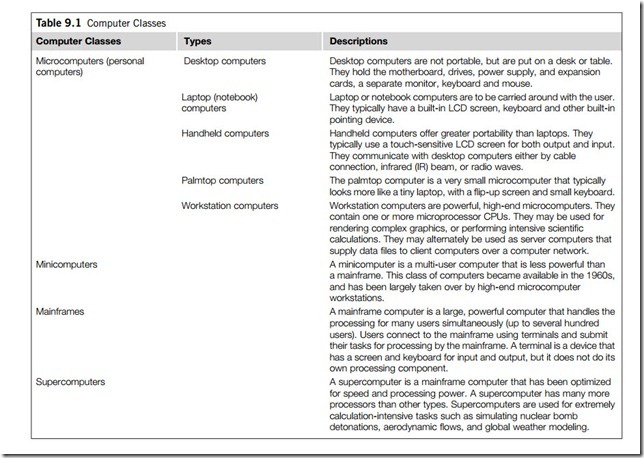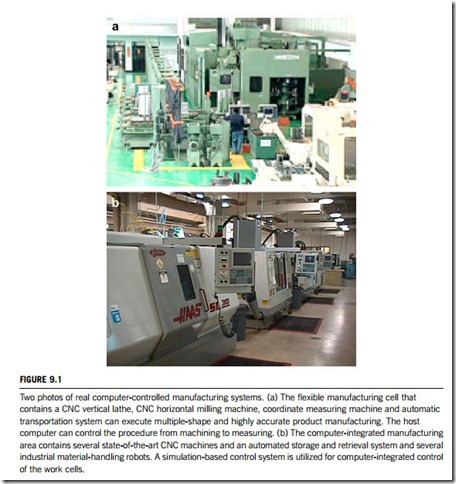Computers are programmable electronic devices that accept data, execute prerecorded instructions, perform mathematical and logical operations, and output results. In computers, software provides information to a central processing unit (CPU) that executes instructions and controls the operation of other hardware components. Memory allows computers to store data and programs temporarily. Mass storage devices such as tape and disk drives provide long-term storage for large amounts of digital data. Input devices such as a keyboard and mouse allow users to enter information that can be output on a display screen, disk, printer, or personal digital assistant. A computer also requires one or more bus devices to transmit data from location to location, or from component to component.
Computers are generally classified by their hardware and mechanical size, and their processing or computing power. They feature a variety of CPU types and are available with many different operating systems. Spreadsheet, database, word processing, and graphic design applications provide specific functionality. Table 9.1 lists some computer classes and types, including microcomputers, mini- computers, mainframes, and supercomputers.
Of all computer classes, supercomputers are the fastest, most expensive machines, used in applications that perform large numbers of mathematical calculations. The main difference between supercomputers and mainframes is that the former execute a few programs as quickly as possible whereas the latter execute many programs concurrently. Minicomputers are mid-range devices that are smaller and less powerful than mainframes, but larger and more powerful than workstations, client computers that connect to a network and share data with other machines.
Computers can be mounted on panels or racks and often include a monitor for displaying information. Cathode-ray tube (CRT) devices use an electron beam to illuminate phosphor dots and are suitable for applications that require relatively high screen resolutions. Flat panel displays, which are often very thin, are used with portable or laptop computers and include technologies such as liquid crystal display (LCD) and gas plasma.
Industrial computers are those computers made for special industrial applications, which include control and automation, business and production management, logistics and so on. As industrial control, automation and production continue to evolve along side computer-based control and manufacturing, industrial computers become ever more important. In all kinds of industrial control system (embedded, real-time, and distributed control systems) and for all kinds of industrial control engineering (process control, motion control, and production automation), industrial computers and controllers play a key role. In fact, many automated manufacturing processes such as stock control and dispatch are controlled by these computers.
Figure 9.1 shows two photographs of computer-controlled manufacturing systems. The upper panel shows a flexible manufacturing cell in which the host computer can control procedures from machining to measuring. The lower panel shows an integrated manufacturing cell in which several industrial robots are controlled by industrial computers using a simulation-based mechanism.
Industrial computers are different from office or home computers, and also those embedded in non- industrial electronic products, such as game and entertainment machines. These differences are dictated by their functions. Industrial computers are usually designed to perform massive data-processing or other large-scale operations, unlike office or home computers, which are designed small tasks and fewer data. In most cases, industrial computers have high processing speeds, bigger storage volumes, larger display screens, and multifunctional human machine interfaces.
Because they are used in industrial environments, industrial computers are specifically designed to withstand various environmental factors such as shock, vibration, humidity, electromagnetic interference, radio frequency interference, dust, flashes and mist. Accordingly, industrial computers require proprietary software and hardware, and mechanical platforms made of special materials to perform well under harsh conditions.
This chapter discusses the classes, configurations, types, peripherals and accessories of industrial computers. It is aimed at providing concise information on these topics, to give a basic understanding and knowledge of the topic.

